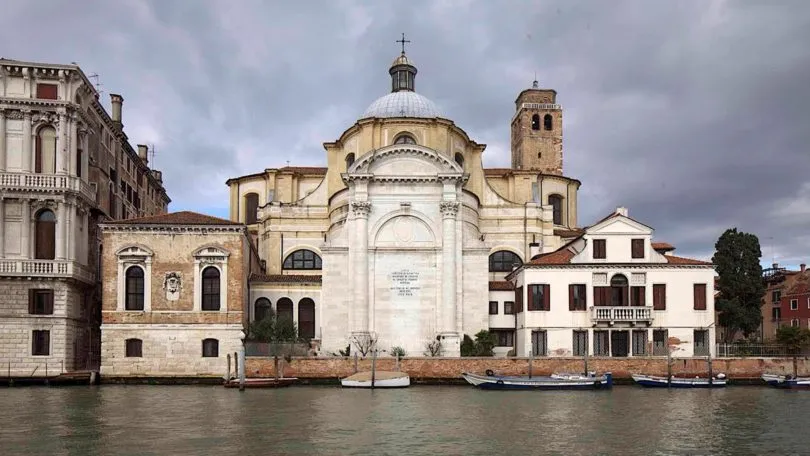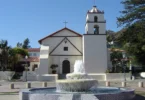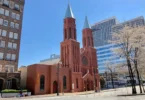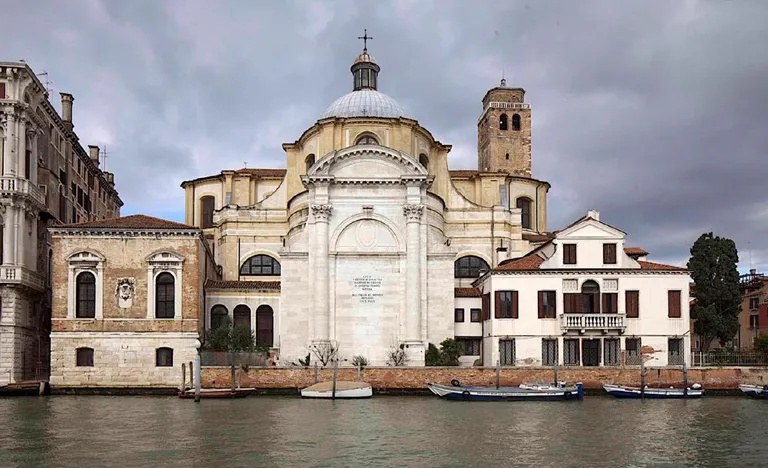
Introduction
The Church of San Geremia or rather Church of San Geremia Prophet since 2018 also holds the title of Sanctuary of Santa Lucia or Sanctuary of Lucia. The Church of San Geremia is one of the most unique shrines in all of Italy. Strategically placed on the edge of Venice’s Grand Canal, this historical shrine was first constructed in the 11th Century and was rebuilt several times throughout history. In the year 1206, it became the final resting place of St. Magnus, one of the first bishops to settle in Venice in in the late 600’s.
The present design of the church dates back to 1753, and while it boasts a familiar Baroque style, similar to many other churches in Venice, it does feature a unique structure and interior configuration. At the centre of the church is a large dome, which provides support to the 4 perpendicular arms proceeding from it. A quick walkthrough of the church is all it takes to realize that you’re actually walking through a giant Greek cross.
At the top of this cross is not the main altar as you might expect, but instead a massive tomb and sanctuary containing the body of St. Lucy. St. Lucy of course, was a virgin martyr who died under the persecution of the Roman Emperor Diocletian in the late third Century.
Tradition says that she was killed by the sword only after she had been set on fire, and it was discovered that her body would not burn. Today, the remains of her body are kept here on display to pilgrims to visit. This hefty-domed 18th-century church contains the body of St Lucy (Santa Lucia), one of the early church’s most famous martyrs, who was killed in Syracuse in AD 304. Her body was stolen from Constantinople in 1204 and moved to San Geremia after the Palladian church of Santa Lucia was demolished in the 19th century to make way for the train station. It’s now displayed in a glass case in its own chapel (visit able by pre-booked tour only), her face covered by a bronze mask.
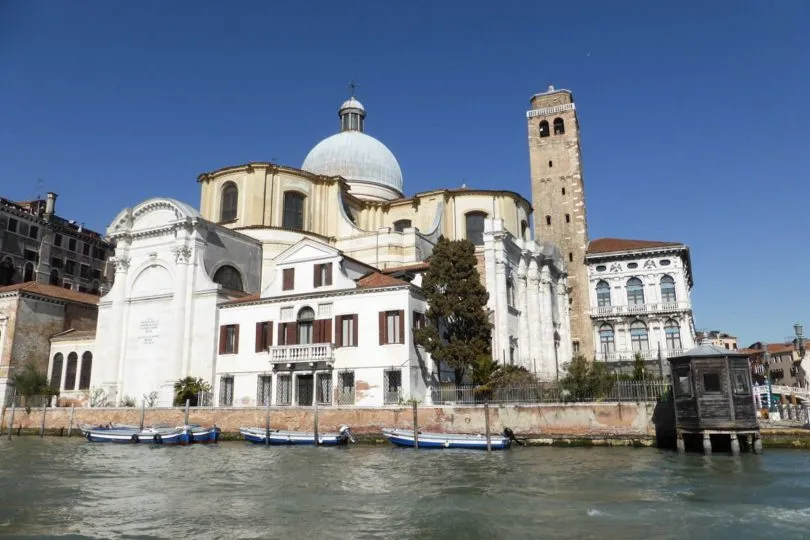
The church standing today was the last church built during the Venetian Republic. According to tradition, the first church of San Geremia was founded in 1013. This was then rebuilt, by the doge Sebastiano Ziani, in 1174. In 1206 it housed the remains of Saint Magno, bishop of Oderzo and Eraclea, who died in the seventh century. The church was consecrated in 1292. The old basilica building, with three naves, stood parallel to the Grand Canal. The presbytery was rebuilt in the sixteenth century. The campanile (bell tower) with its tower of plain brick with two narrow double Romantic windows at the base is one of the oldest in the city – thought to date from the 12th century. The belfry was added later.
A new church, dedicated to Santa Lucia, was built in Venice and consecrated in 1313. In 1441 the sacred building passed on to the jurisdiction of the nearby convent of Corpus Domini and in 1574 to the Augustinian Servants of Mary. Over the years the building underwent various interventions and renovations. In 1580 Palladio made some drawings for interiors of the church. An inscription on the major portal has him as the author, although the building was only completed thirty years after his death. The chapel of Lucy is generally believed to have been based on his designs.
The church was built by Carlo Corbellini between 1753-60, who took his inspiration for it from the Salute church. Corbellini rotated the longitudinal axis of the building so that the main facade faced onto Campo San Geremia, with an entrance preceded by a high staircase. The first mass was celebrated on April 27th, 1760, during the final works of reconstruction.
The church is a large building, built on the Greek cross model, with four wings and facades facing onto the Canale di Cannaregio, the Grand Canal and Campo San Geremia (the main entrance). The architect Corbellini considered the Cannaregio canal facade to be the most important. The luminosity of the church is created by twenty large windows placed high above.
After the Napoleonic decree of 1805, which called for the suppression of all convents and monasteries in Venice, the convent at Santa Lucia was closed. The original Santa Lucia church and convent were demolished (1861-63) to make way for the new railway station. It was decided that Lucy’s relics should rest in the nearby church of San Geremia, where they still lie today.
In memory of the old Santa Lucia church, the railway station took the name of Venice Santa Lucia.In 1870 the façade facing the Canale di Cannaregio was built.
Following the damage made by the Austrian bombardment of 1849, two new facades were built in the second half of the 18th century, one facing Campo San Geremia (Saint Jeremiah Square), and the other one oriented towards the Cannaregio Canal. The façades overlooking the campo and the Cannaregio Canal, however, date back to 1861, the year in which the works were completed. From the Grand Canal you can read this inscription on the wall of the apse of the church:
“LUCIA VIRGIN OF SYRACUSE MARTYR OF CHRIST IN THIS TEMPLE REST TO ITALY TO THE WORLD IMPLOR FOR LIGHT PEACE”
A chapel built in 1863 contains the relics of the Sicilian Santa Lucia, stolen by Enrico Dandolo during the Sack of Constantinople, which, in 1204, marked the end of the Fourth Crusade. On 27 June 1998 the church was hit by fire. In 2018 the church was elevated to a sanctuary.
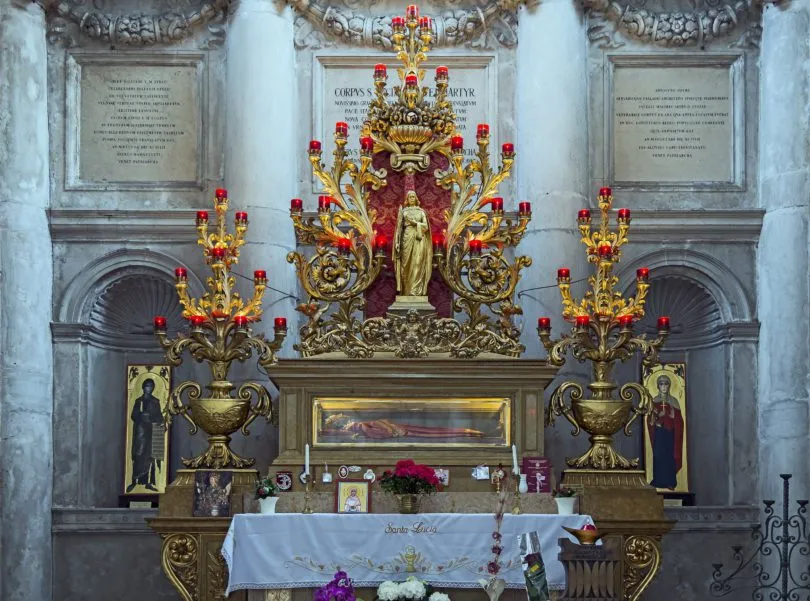
Architect: Carlo Corbellini
Architectural style: Neoclassical
The interior of the church is characterized by rich classical architecture. The altar is very beautiful and valuable, with its presbytery, in which you can admire the statues of St. Peter the Apostle and St. Jeremiah the Prophet, dated 1798, by Giovanni Ferrari. In the background the monochrome fresco work by Agostino Mengozzi Colonna Due Angeli in Atto di Sostenere il Globo.
The work that appears on the fourth altar is noteworthy: The virgin attends the coronation of Venice carried out by Bishop S. Magno of Palma the Younger. Other works of art worth mentioning are The Coronation of Venice by Saint Magnus, one of the four paintings made by Palma il Giovane for the church, and sculptures by Giovanni Maria Morlaiter and Giovanni Marchiori.
The church has a number of high Corinthian columns which give a sense of space and large windows which provide its luminosity. The interior is covered by a large oval-shaped dome, ended by a semicircular apse and is surrounded by four hemispherical domes. Bundles of Corinthian columns hold up the dome at the crossroads of the transept, supporting the arches of the minor chapels; in the intercolumns there are interesting eighteenth-century altars.
Art & Sculptures of Sanctuary of Santa Lucia
The church features four paintings by Palma il Giovane (including the painting of Santa Lucia), and paintings by Tintoretto, Marchiorri and Schiavoni amongst others. Sculptural works of note include the Madonna del Rosario by Giovanni Maria Morlaiter and The Immaculate Conception by Giovanni Marchiori. There is a miraculous acheropita sculpture of Christ in the church dating back to the early seventeenth century.
The chapel of Saint Lucia
On 11 July 1860 Lucy’s relics were brought from the old demolished Santa Lucia church to the nearby church of San Geremia, where they remain today. With the relocation of her relics it was decided that the church (dedicated to Saint Jerome since the 11th century) should now be called ‘Santi Geremia e Lucia’ (Saint Jerome and Saint Lucy). A new resting place for Saint Lucy was created on the wing of the transept of San Geremia (which faced towards the Grand Canal).
The new chapel for her was built using marble from the demolished church and followed the original design by Palladio. The altar, in brocatello marble from Verona, was made with friezes of gilded bronze designed by the architect Gaetano Rossi.
The seventeenth-century urn and altar were replaced in 1930 with the current one by the Venetian architect Gaetano Rossi, which allowed the body of Saint Lucy to be visible on both sides. In 1955, the future Pope John XXIII – at the time patriarch cardinal Angelo Roncalli – visited the relics of Santa Lucia. After his visit he commissioned the sculptor Minotto to make the silver mask that now covers the saint’s face.
The prospect of the church on the Grand Canal corresponds to the chapel of Santa Lucia and on the exterior of the church stands the inscription (which can only be viewed canal-side): “LUCIA, VERGINE DI SIRACUSA MARTIRE DI CRISTO IN QUESTO TEMPIO RIPOSA ALL’ITALIA AL MONDO IMPLORI LUCE E PACE” (“Lucia, Virgin of Siracusa in this temple rests, To inspire light and peace in Italy and the world”).
The cult of Saint Lucia
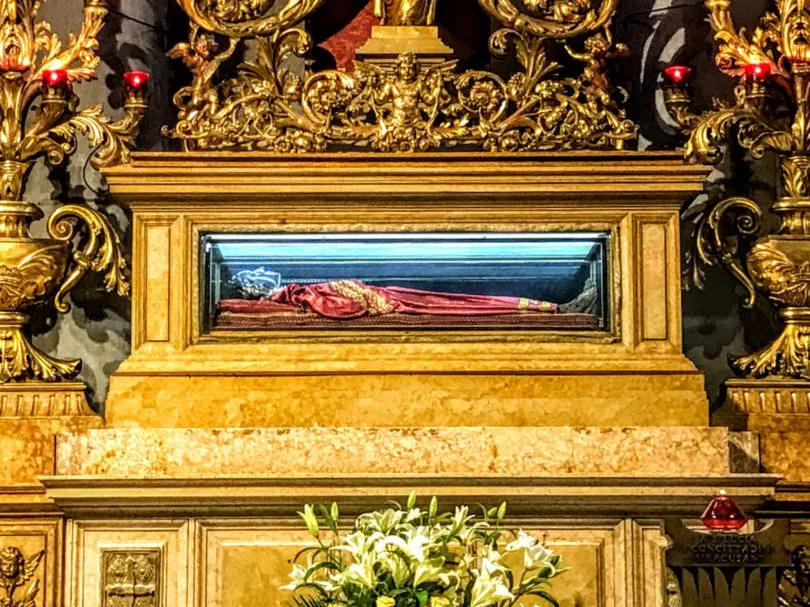
Following the demolition of the church of Santa Lucia , the mortal remains of one of the most well-known and venerated saints of Christianity, Saint Lucia , virgin and martyr from Syracuse , are preserved in the church of San Geremia . The place is a destination for pilgrimages of faithful who, from all over the world, bring their veneration to the saint.
The chapel in which we find the urn containing the saint’s remains was built with material from the Palladian church of Santa Lucia, demolished in 1861 to make room for the Venice railway station which still retains its name. The saint’s remains have been preserved in the current reliquary since 11 July 1863. In 1955 the then Patriarch of Venice Angelo Roncalli, future Pope John XXIII, had a silver mask placed on his face to protect him from dust.
On November 7, 1981, some criminals stole the body of Saint Lucia from the church, with a real act of armed robbery, demanding a ransom for its return. The relic was then recovered by the police on the night of 13 December of the same year, i.e. on the day of the liturgical memory of the Saint, without any ransom being paid.
The devotion towards the relics of the Saint has recently been rekindled following the elevation of the Church of San Geremia to the status of Sanctuary, which popularly becomes the “Shrine of Lucia”.
The remains of Saint Lucia, which due to historical vicissitudes have been in Venice for many centuries, are strongly requested by the population of Syracuse, the saint’s birthplace, to return to rest inside the original tomb. During the Arab domination of Sicily the remains had been hidden and when, in 1039, the Byzantine general Giorgio Maniace reconquered the island he took them to Constantinople. From here, in 1204 during the Fourth Crusade, the Doge Enrico Dandolo had them transferred to Venice.
Annual Feast Day
Feast day: December 13
The annual feast day of Sanctuary of Lucia is celebrated on December 13 each year.
Mass Timing
Except for special holidays, masses have the following timetable:
- Tuesday, Thursday and Saturday at 4:30 pm
- Sunday and Holidays at 10:00 am
Opening Time
The Sanctuary of Lucia is open from Monday to Sunday
- 9:30 am – 1:00 pm
- 2:00 pm – 5:00 pm
Contact Info
Campo San Geremia 272 – Venice
Phone No.
Accomodations
How to reach the Sanctuary
Airways
The nearest airport to the Church of San Geremia is Venice Airport (VCE) which is just 12.3 kilometres away from the basilica.
Railways
The nearest railway to the Church of San Geremia is Stazione di Venezia Santa Lucia which is just 12.5 kilometres away from the basilica.

